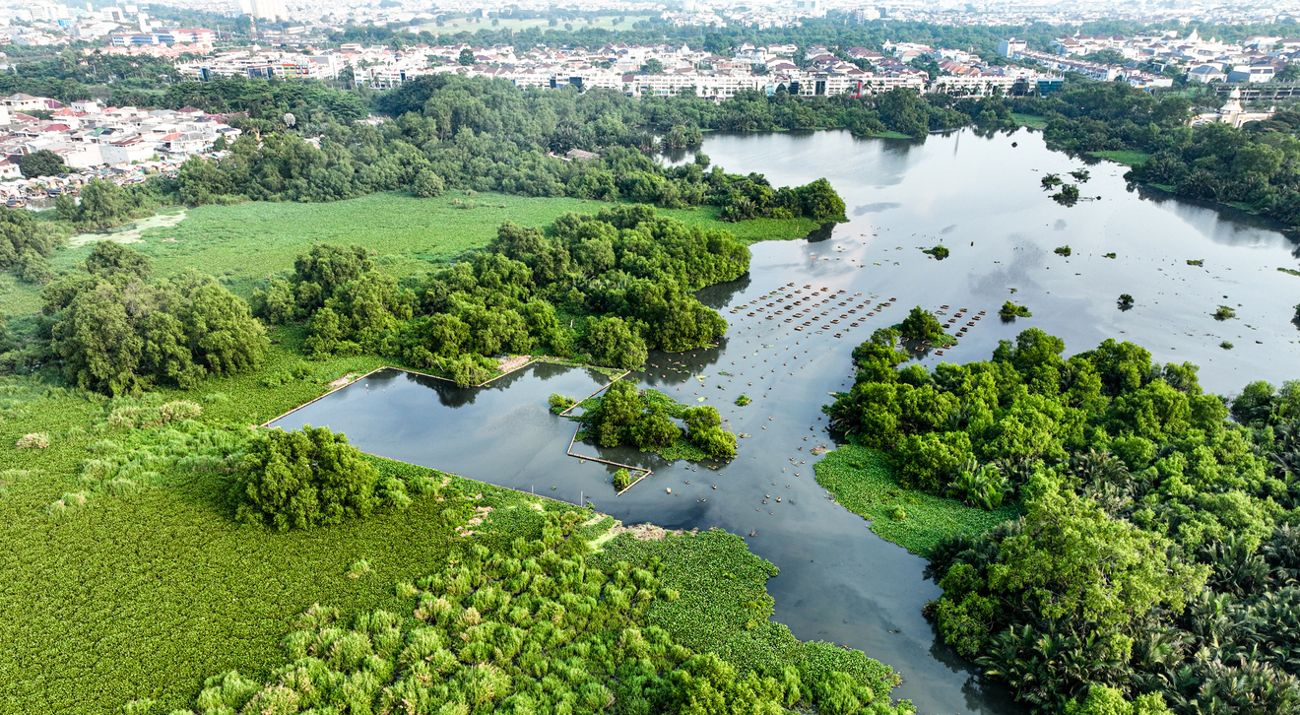Impact of Ecosystem Restoration and Infrastructure Development on the Diversity of Birds and Reptiles in the Muara Angke Wildlife Reserve
By Topik Hidayat, Mangrove Science Officer
Muara Angke Wildlife Reserve is a part of the Tegal Alur-Angke Kapuk mangrove forest area which was first established as a strict nature reserve through the Dutch Governor-General Decision No. 24 on June 18, 1939, with an area of 15.40 ha. In 1998, this area became a wildlife reserve function with an area of 25.02 ha based on the Indonesian Ministry of Forestry and Estate Crops Decision No. 755/Kpts-II/1998 because it requires more intensive management to support the population of the long-tailed macaque (Macaca fascicularis) and aquatic birds. This area is an Important Bird Area (IBA) because it is a habitat of Javan coucal (Centropus nigrorufus) and the feeding ground of the milky stork (Mycteria cinerea).
Data compiled by the Jakarta Natural Resources Conservation Agency (Balai Konservasi Sumber Daya Alam/BKSDA Jakarta) from 1982 – 1996 showed that 95 species of birds and 6 species of reptiles were found in the Muara Angke Wildlife Reserve. As for the latest observations, only 57 species of birds (in 2021) and 4 species of reptiles (in 2019) were still found. The diversity of birds and reptiles in the Muara Angke Wildlife Reserve tends to be dynamic due to changes in environmental conditions inside and outside the area, such as reduced habitat (mangrove ecosystem), loss of feeding ground which is invaded by invasive plants, hydrological problems, and the conversion of mangrove forests around the Muara Angke Wildlife Reserve into settlements.
The BKSDA Jakarta (under the Indonesian Ministry of Environment and Forestry) as the management authority of the Muara Angke Wildlife Reserve has partnered with the Yayasan Konservasi Alam Nusantara (YKAN) and related stakeholders, through the Mangrove Ecosystem Restoration Alliances (MERA) program since 2018. The main program of MERA in the Muara Angke Wildlife Reserve is Strengthening the Function of the area as an Environmental Education Center and Mangrove Ecosystem Restoration to Support the Integrated Management of Mangrove Ecosystems in Jakarta.
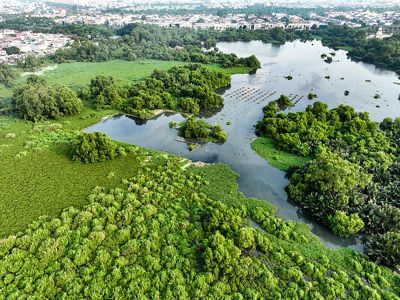
Several ecosystem restoration activities in the Muara Angke Wildlife Reserve that have been carried out include using heavy equipment (excavator) such as clearing invasive plant species (2.54 ha), land preparation (1.23 ha), and hydrological improvement (5,995 m2). These activities were carried out to create an environment that supports the growth of mangroves, both naturally and through planting activities. However, restoration activities are thought to have also disturbed some habitats of birds and reptiles. Apart from that, the construction of infrastructures such as a gateway, a boardwalk (338 m long), a management center building (143 m2), a watchtower (16.5 m high), a dock (18 m2), a garbage barrier (203 m long), a mangrove nursery (200 m2), and a Ficus nursery (28 m2) was using types of equipment that produces loud noises and involved many workers. It is also suspected of disturbing the existence of bird and reptile species.
Based on the above conditions, it is necessary to study the impact of mangrove ecosystem restoration and infrastructure development on the diversity of birds and reptiles in the Muara Angke Wildlife Reserve. Data obtained from this study (post-restoration) were compared with data before the restoration (pre-restoration) to analyze the impact (positive, negative, neutral) of the activities that have been carried out.
The study was conducted from December 2022 – January 2023 on 5 selected transects. The selection of the study period, transect, and other technical methods were attempted to be the same as in previous studies to obtain valid data for comparison. Bird communities are sorted based on functional habitat for ecological grouping. For data analysis, several indices were used (Shannon-Wiener diversity, evenness, Bray-Curtis community similarity) and simple comparisons of species abundance, distribution, and composition.
Bird Species SMMA
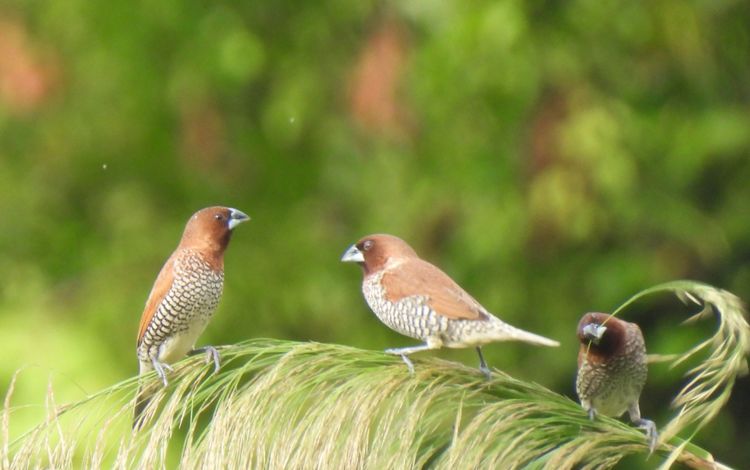
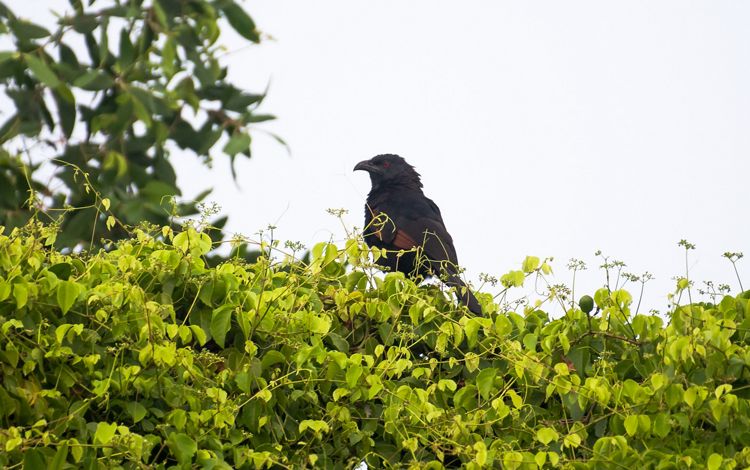
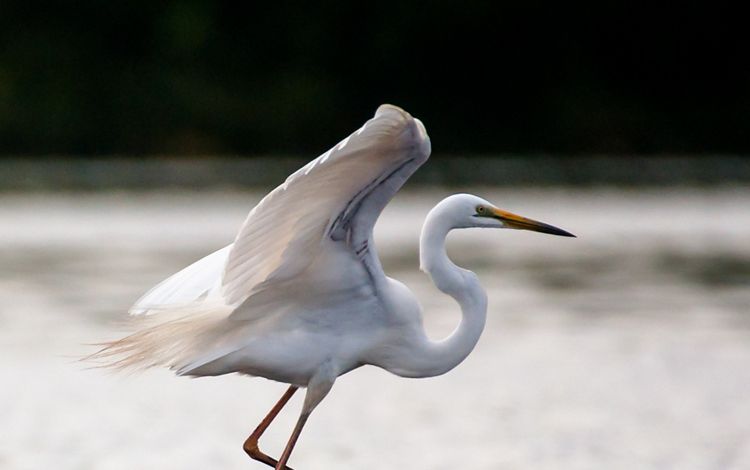
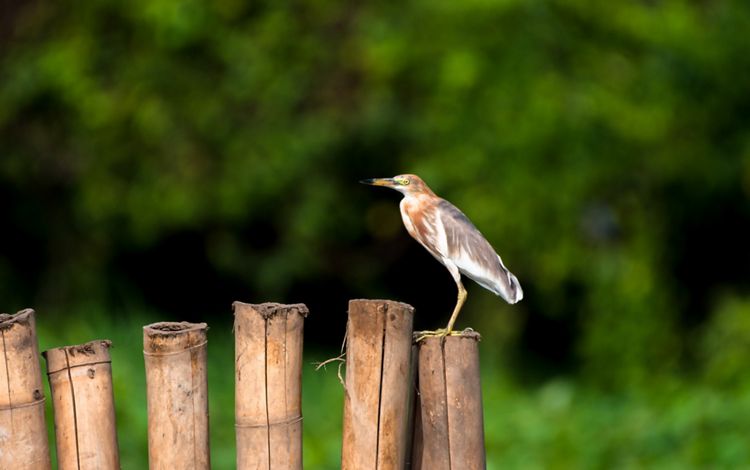

Post Restoration
Bird and reptile habitats are still diverse after restoration activities. Although, the invasive water hyacinth is re-growing and covers most of the swamp area, resulting in the potential siltation and reduced feeding grounds for the aquatic birds. Birds and reptiles utilize all types of habitats in the area, including terrestrial areas within the reserve, terrestrial areas on the boundaries of the reserve, banks of the Angke River on the eastern border, estuary of the Angke River, and swamps - riverbanks of the Pandan River.
Functional data on the bird and reptile habitats indicate that the Muara Angke Wildlife Reserve contains many microhabitats that allow various species of animals to use the area as a habitat. Because of this, the Muara Angke Wildlife Reserve can still function as a good habitat for bird and reptile species, supported by this study which has recorded 60 bird species (20 aquatic bird species and 40 terrestrial bird species) and 16 reptile species.
In terms of numbers, this reserve can accommodate a sufficient number of animals. Several bird species (little egret, Javan pond-heron, western great, scaly-breasted munia, pink-necked green-pigeon, and Javan myna) and reptiles (common water monitor and oriental garden-lizard) can be found in large numbers.
The number of bird and reptile species during the post-restoration period increased (from 57 to 60 species for birds; 10 to 16 species for reptiles) compared to pre-restoration, but the Shannon-Wiener diversity index value decreased for birds (3.12 to 2.99). For reptiles, there was a slight increase in diversity index value (1.87 to 1.95). The community composition of birds and reptiles has changed a lot, according to the indication of the community similarity index value (0.54 for birds and 0.27 for reptiles).
The impact of this ecosystem restoration varies greatly from one species to another (mixed impact). However, the overall conclusion is that ecosystem restoration and infrastructure development have a negative impact on bird diversity (despite increased species richness), while for reptiles (especially snakes) the impact was positive. It should be noted that the results of this analysis are still short-term, while the impact of restoration on habitat quality is long-term.
The number of individual birds during the post-restoration decreased, while the number of most reptile species increased. The species that were noticed from the beginning and were feared to disappear, namely Sunda coucal, milky stork, and saltwater crocodile, could still be observed in the area studied, although their numbers decreased (both bird species) or remained constant (saltwater crocodile). The composition of these birds and reptiles underwent many changes during the post-restoration period.
Several bird species experienced an increase in abundance (positive impact) during the post-restoration period including Sunda teal, striated heron, sooty-headed bulbul, Sunda woodpecker, scaly-breasted munia, pink-necked green-pigeon, oriental white-eye, and scarlet-headed flowerpecker. The aquatic bird species that were increasing in abundance include the oriental darter and western great, which are most likely resident birds from the Pulau Rambut Wildlife Reserve that comes daily. Meanwhile, bird species that have drastically decreased were the freckle-breasted woodpecker, golden-bellied gerygone, Eurasia tree sparrow, and Javan munia. The Sunda coucal, an endemic bird species to Java Island, has also decreased during the post-restoration period. However, most reptile species have increased in number, except for the common flying dragon which was not even observed anymore.
Analysis of the bird and reptile species distribution showed that the distributions of these species were very dynamic. Most bird species have experienced a change in distribution, while many reptile species have a more widespread distribution.
Impact studies, especially for the bird community that can fly high, certainly cannot be separated from factors outside the Muara Angke Wildlife Reserve (external factors). Many birds are not permanent residents of this area. Several birds can be identified as migratory birds and resident birds that come from the surrounding area. These bird species could easily be absent from the Muara Angke Wildlife Reserve during and after the restoration. Apart from that, birds can also move temporarily to the Angke Kapuk Protection Forest area which is directly adjacent to the wildlife reserve area. For the reptile, all species are likely permanent residents, although some species (Chinese softshell-turtle and Siamese temple-turtle) were suspected to have been released from the surrounding community.
Several species of SMMA reptiles
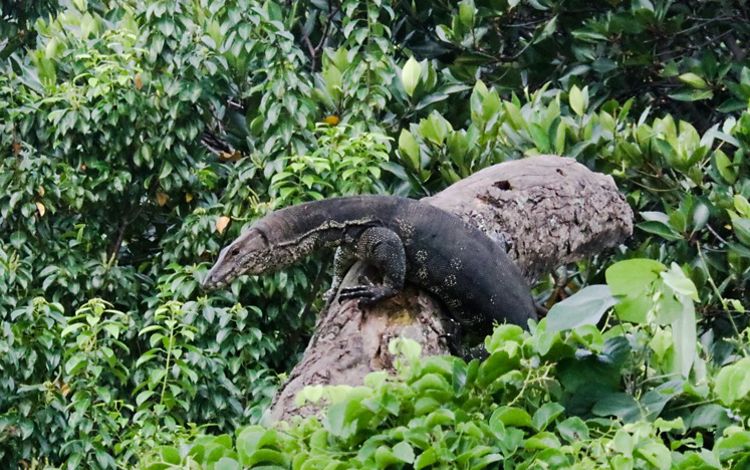
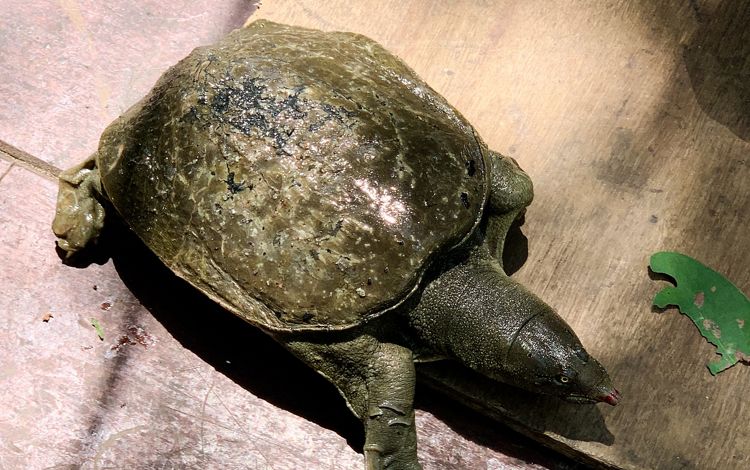
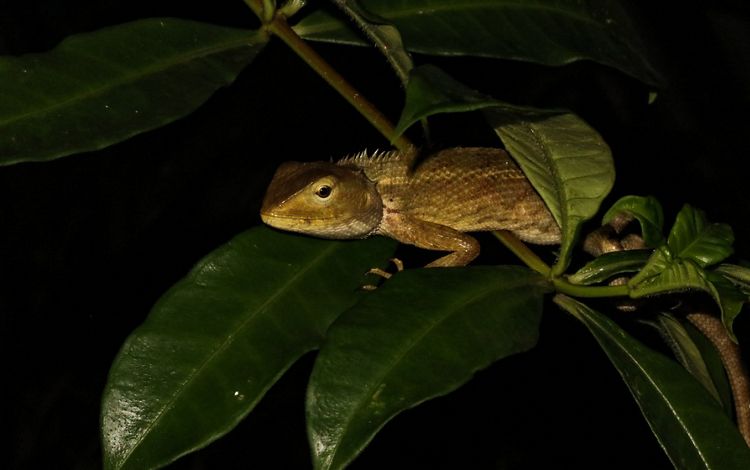

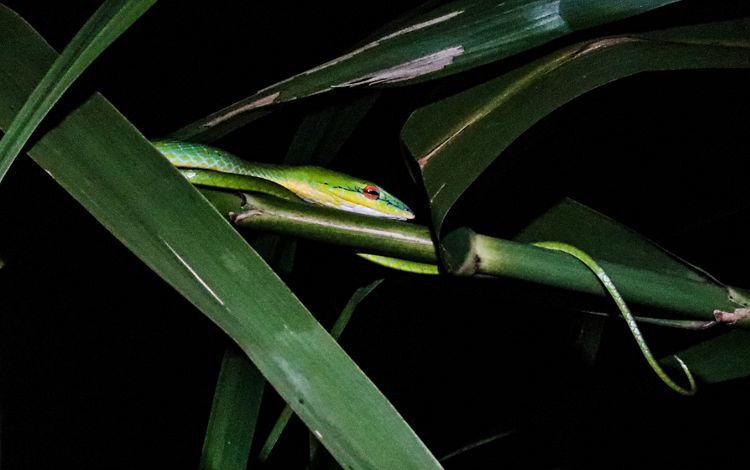
One species of snake, namely the red-eyed vine snake (Ahaetulla cf. rufusoculara) found in the study area is a new species, which requires further study. This snake was known to only exist in Vietnam and has never been recorded in Indonesia. Further studies on the certainty of this species need to be carried out.
The quantity (area) and quality of the Muara Angke Wildlife Reserve habitat can still be increased by incorporating mudflats around the reserve as part of Muara Angke Wildlife Reserve (in progress), protecting the area from illegal activities, and continuing restoration efforts, one of which is cleaning the water hyacinth. Water hyacinths that cover most of the water surface will reduce feeding grounds for certain birds, such as Sunda teal, little black cormorant, and oriental darter.


